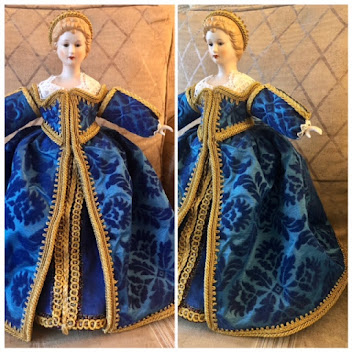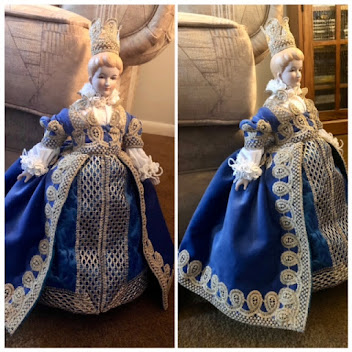Taking knowledge away some from recent research with some hands on trying at Heritage Days. Was able to sort out of the tricks with spinning flax being a plant fiber versus wool being an animal fiber. There isn’t any stretch with flax it will just snap eventually. There are distinct behavioral differences in the fiber arrangement and features when spun for flax.
Drawing a broken to new pieces one has to pick and fluff to separate fibers as wool but differently. Flax to linen is on the docket to do a small project with handmade thread or weave into cloth then embroider. Lots of options to consider though have bought some raw fiber to try out and see if I can get it to be nice as I did on last weekend. I have 8 oz of flax and 8 oz of hemp on its way.
Though the main task is to spin up a bunch of linen to get used to the plant fiber. I also ordered a hemp to make a fine thread of that as well to keep practicing with other form of the plant based fibers. Nettle I would need to find a stand and harvest it myself, so eventual goals. In the picture you can clearly see the thread like twine on the spool. Then the whispy hair like plant fibers towards the bottom for drafting more to be spun into linen thread.
Drawing a broken to new pieces one has to pick and fluff to separate fibers as wool but differently. Flax to linen is on the docket to do a small project with handmade thread or weave into cloth then embroider. Lots of options to consider though have bought some raw fiber to try out and see if I can get it to be nice as I did on last weekend. I have 8 oz of flax and 8 oz of hemp on its way.
Though the main task is to spin up a bunch of linen to get used to the plant fiber. I also ordered a hemp to make a fine thread of that as well to keep practicing with other form of the plant based fibers. Nettle I would need to find a stand and harvest it myself, so eventual goals. In the picture you can clearly see the thread like twine on the spool. Then the whispy hair like plant fibers towards the bottom for drafting more to be spun into linen thread.
Here is an upclose look at the dried plant above. Then a finished flax fiber ready to be made into linen threads. It’s soft and smoother than it looks. Reminds me of corn silk but different. Which I have an image of the fiber to the right. I was able to eventually get a good closeup of the thread made at the event. So will show progress on this along with doll planning and blackwork embroidery as I finish projects.
Busy as usual,
Marrin o’Kealy
Busy as usual,
Marrin o’Kealy








No comments:
Post a Comment